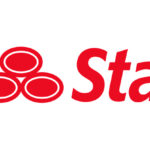A profitability problem that would have otherwise taken InsurTech Hippo half a year to correct is on the mend after just 30 days, the chief executive officer said at an investor conference Thursday.
Speaking at the Keefe, Bruyette & Woods Insurance conference, Rick McCathron also reported that a nationwide pause in writing new business on Hippo paper, which was put in place last month, will start being lifted—slowly—next week.
“We’re going to start turning the spigot back on in a very selective way in areas in which we think that we are priced adequately,” McCathron said, continuing an analogy to a leaky hose that he introduced in answer to the opening question from KBW Director Tommy McJoynt.
McJoynt asked McCathron for the behind-the-scenes rationalization that went into the decision to pause writings all over the country.
Said McCathron: “I don’t know about you but when I have a leaky hose, I generally turn the hose off at the house before I try to plug the leaks. And that’s exactly what we did.”
The CEO prefaced the response by highlighting Hippo’s “ability to quickly react to a change in market” as a strategic advantage, stressing the benefits of the company’s technology stack and nimble team.
Weather losses that pummeled second-quarter earnings revealed the harsh reality that a more gradual plan of “improving the portfolio by way of diversification” wasn’t working, McCathron said. In the second quarter, Hippo reported a gross loss ratio of 178 for its Hippo Home Insurance Program, one of three business segments contributing to overall results. According to the second-quarter financial statements, the segments—Hippo Home Insurance, Services (consisting of an insurance agency and home care protection services) and Insurance as a Service (fronting business)—all had operating losses, but the bulk of the losses came from the insurance program.
“We talked about it as a management team. We said look, let’s go ahead and shut everything down. Let’s find out where all the holes are in the leaky hose. Let’s plug those holes, and then let’s turn it back on gradually where it makes sense,” he said, later noting that while external messaging from the company at the time indicated that the pause would be temporary, it did give rise to questions.
Referring to the gradual reemergence of Hippo Home Insurance planned for next week, McCathron said, “We’ve taken the necessary corrective actions where we feel like we can continue to grow the business, but I would not mistake that [for] turning back on full bore.”
“It will start it as a trickle. We’ll continue to turn it on as each day week goes by, as we continue to model our portfolio and identify and make sure we don’t spring any other leaks,” he said.
Asked whether the announcement of the pause last month had any spillover impact on the agency and fronting segments of the business, McCathron said there were indeed questions posed about what the action would mean for those other relationships. He added, however, “I think we all recognize the challenges that the property insurance market are facing are not Hippo challenges. They’re industry challenges. Everybody’s getting hit hard with weather changes, inflationary pressures, regulatory constraints,” he said.
“If you look at the number of carriers, both large and small, that have either stopped writing new business in given markets, have pulled out of given markets, have started to nonrenew business in given markets, we are one of many. And I think most of our distribution partnerships understand that. And those that understand our business a little bit more would even comment [that it is] a good thing you’ve got the agency. It’s a good thing you’ve got Spinnaker [the fronting operation], and that you have these other successful profitable business lines that you can continue to lean on while you protect the house and make sure that your portfolio is in such a place that you’re comfortable with. And our definition of a place we’re comfortable with is one that has significantly reduced volatility subject to weather,” he said.
McJoynt pressed McCathron on the decision to shut down all new business rather than attacking the insurance profitability problems market by market as other carriers have done.
For a company Hippo’s size, bringing “all hands on deck to correct a problem is a better plan than slowly keeping some things business-as-usual,” he said, stressing the speed of adjustments made possible by pulling everyone in the company off their particular projects to focus on correction actions.
“We announced our shutdown about a month ago, and in that time we’ve initiated nonrenewals of policies in problematic areas. We’ve changed commission structures with our independent agents in areas that are problematic. We’ve increased our deductibles in markets” where we could. “We’ve started canceling business and moving business over within our agency to other carriers that we represent that maybe don’t have the geographical concentration that we did….
“We were able to essentially take all hands on deck, shift them over and do what normally would take six months to do it in a 30-day period of time,” he stressed.

McCathron said biting the bullet to implement a full shutdown allowed Hippo to do a full analysis of its entire portfolio, and to model potentially problematic events that haven’t happened—to make sure “we didn’t have any blind spots.” Giving an example, he noted that while it’s logical to think that earthquake and flood are not correlated, recently California experience both within a 48-hour period.
While McCathron noted the California was a state that Hippo probably would have been shut down or slowed up business in anyway, at several points during the session he suggested that Hippo Home’s biggest issue is hail in Texas. “Our singular focus right now for the Hippo insurance policy segment is to significantly reduce the volatility in that prior to hail season next year…If we waited six months to do some of these things, there would have been policies that would have renewed that we wish hadn’t,” he said.
Later, in response to a question about Hippo’s preferred customers—what Hippo refers to as “Generation Better” customers, who are comfortable with installing mitigation devices like leak detection sensors and sharing sensor data with the company—McCathron said, “The vast majority of our challenge is our historical legacy book of business.”
“When we started the company, for lots of reasons [but] predominantly [because] we were merely distribution for one reinsurance partner, we got overly concentrated in one particular area, eyes wide open. They knew it, we knew it, but we weren’t taking any risk,” he said, without identifying the reinsurer. “That portfolio grew and as we shifted into more of a risk participant, that’s the portfolio that’s causing the challenges,” he said.
McJoynt clarified for the audience that this book was in Texas, and McCathron confirmed it.
Asked how long it would take for Hippo to reopen for new business countrywide, and what policies would be first, McCathron admitted that there are markets that Hippo probably “will not turn back on” at all, while others will be turned on fairly quickly.
“When we start opening up a spigot next week, we’re going to lead with our new construction builders policies. Those are policies that traditionally have had a very good loss ratio for us,” he said, adding that as the carrier opens those up, it will watch for uncomfortable aggregations. “We will certainly not open up states [where] we already have concentration risk,” he said, without identifying them specifically.
“It’s a combination of let’s diversify by growing the top line in areas that we’re comfortable with. Let’s simultaneously correct the portfolio by removing business that we’re uncomfortable with. But you’ll see gradual opening up and gradual at increasing speeds over the next six months.”
McJoynt asked McCathron to confirm that the nationwide pause was not a reaction to a capital adequacy or rating agency issue, which he did. McCathron also took the opportunity to clarify that the Hippo’s Home Insurance Program represents only about $400 million of guided total premium of $1.1 billion for full-year 2023. Another $400-500 million is in the Spinnaker non-Hippo program, where Hippo acts as a fronting carrier. “That is a profitable portfolio for us, both from an underwriting perspective and from an EBITDA perspective,” he said, adding that fronting fees have grown considerably “It is subject to very little volatility and very little risk. Even in ’22 when the industry was struggling that had a profitable book of business, it was a profitable portfolio.”
The remainder of the premium relates to agency business, which is not subject to any capital requirements.
McCathron also spoke about Hippo’s home services business—Hippo Home Care—which currently has over 10,000 active monthly users. “Any claim we can help our customers avoid, whether they’re with the Hippo Home Insurance program or with a third-party carrier, benefits everybody,” he said, adding that the home services business is a significant growth engine for the InsurTech.
Although the CEO said he could not quantify the loss ratio impact of actions taken during before and during the pause—rate increases, changes in terms and conditions, higher deductibles, geographic diversification—he confirmed that Hippo’s “initial” loss ratio target is in the 60s, and that the company expects to be EBITDA profitable (across all three segments combined) by year-end 2024.
“We say initial [loss ratio] target because our focus [is] on…Generation Better customers—and those are customers that want to partner with us and use our home care services to produce a better loss ratio. Since we’re singularly focused on growing the portfolio with those customers, those customers do produce a better loss ratio,” he asserted.
During the remainder of the session, McCathron talked about Hippo’s reinsurance program and about an embedded insurance partnerships with home builders like Lennar and Toll Brothers.





















 Underwriter, Actuary Fears of AI Drop; Work Needed on Collaboration
Underwriter, Actuary Fears of AI Drop; Work Needed on Collaboration  NOAA Announces Latest AI-Driven Global Weather Models
NOAA Announces Latest AI-Driven Global Weather Models  Berkshire Hathaway Enters Post-Buffett Era as Share Prices Fall
Berkshire Hathaway Enters Post-Buffett Era as Share Prices Fall  Why ‘Good Enough’ Is Killing Insurance: The Hidden Cost of Satisficing
Why ‘Good Enough’ Is Killing Insurance: The Hidden Cost of Satisficing 


